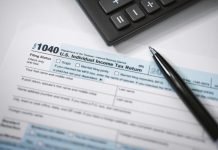

The CFPB also warned parents about other provisions of private student loans. Some lenders have a list of criteria that permanently bars co-signers from release, such as any request for loan forbearance. Meanwhile, many agreements call for “auto-default” if the co-signer dies or declares bankruptcy, meaning the student is required to repay the loan in full immediately.
“Parents and grandparents put their financial futures on the line by co-signing private student loans to help family members achieve the dream of higher education,” said CFPB Director Richard Cordray. “Responsible borrowers and their co-signers should have clear information and standards for releasing the co-signer if the time is right. We’re concerned that the broken co-signer release process is leaving responsible consumers at risk of damaged credit or auto-default distress.”
The findings in the CFPB report:
- Companies rejected 90% of consumers who applied for co-signer release: Many private student lenders advertise options to release a co-signer from a private student loan. However, an analysis of industry responses to the CFPB’s information request found that the lenders and servicers surveyed granted very few releases — of those borrowers who applied for co-signer release, 90% were rejected.
- Consumers left in the dark on co-signer release criteria: The CFPB found that consumers have little information on the specific borrower criteria needed to obtain a co-signer release. Consumers reported being confused about their eligibility for obtaining a co-signer release, as well as not understanding why they had been denied.
- Most private student loan contracts continue to contain auto-default clauses: Last year, the CFPB reported that private student loan servicers were putting borrowers in default when a co-signer died or filed for bankruptcy, even when their loans were otherwise in good standing. Following that report, some financial institutions stated that they would no longer hit borrowers with auto-defaults. The CFPB’s analysis of private student loan contracts, however, found that most private student loan contracts continue to include auto-default clauses.
- Borrowers are at risk when loans are sold and packaged by Wall Street: Even if individual companies state that they will not trigger auto-defaults in certain cases, loans are often sold to other banks and securitized on Wall Street. This puts borrowers at risk for the loan being triggered for an auto-default with the new owner.
- Company policies can permanently disqualify borrowers from co-signer release: Student loan borrowers reported that some companies’ policies penalize or disqualify borrowers who prepay their loans and are in good standing. Some companies also disqualify borrowers from releasing a co-signer if the consumer accepts the servicer’s offer of postponing payment through forbearance. These company policies can permanently ban a consumer from seeking co-signer release for the life of the loan and penalize consumers that may have graduated during tough economic times.
- Potentially harmful clauses found in the fine print: In addition to auto-default clauses, the CFPB found other potentially harmful clauses hidden in fine print of some loans including “universal default” clauses. Financial institutions use these clauses to trigger a default if the borrower or co-signer is not in good standing on another loan with the institution, such as a mortgage or auto loan, that is unrelated to the consumer’s payment behavior on the student loan. These clauses can increase the risk of default for both the borrower and co-signer.
If you’ve co-signed on a private student loan, or any loan, it’s important to keep an eye on your credit report and credit scores for any problems so you can take steps to correct them as soon as possible. You can get your credit reports for free every year from AnnualCreditReport.com, and there are many ways to get your credit scores for free, including from Credit.com, where you can get two of your credit scores updated every month.
This article originally appeared on Credit.com and was written by Bob Sullivan.









